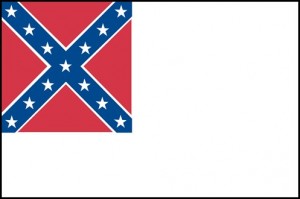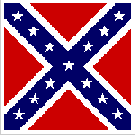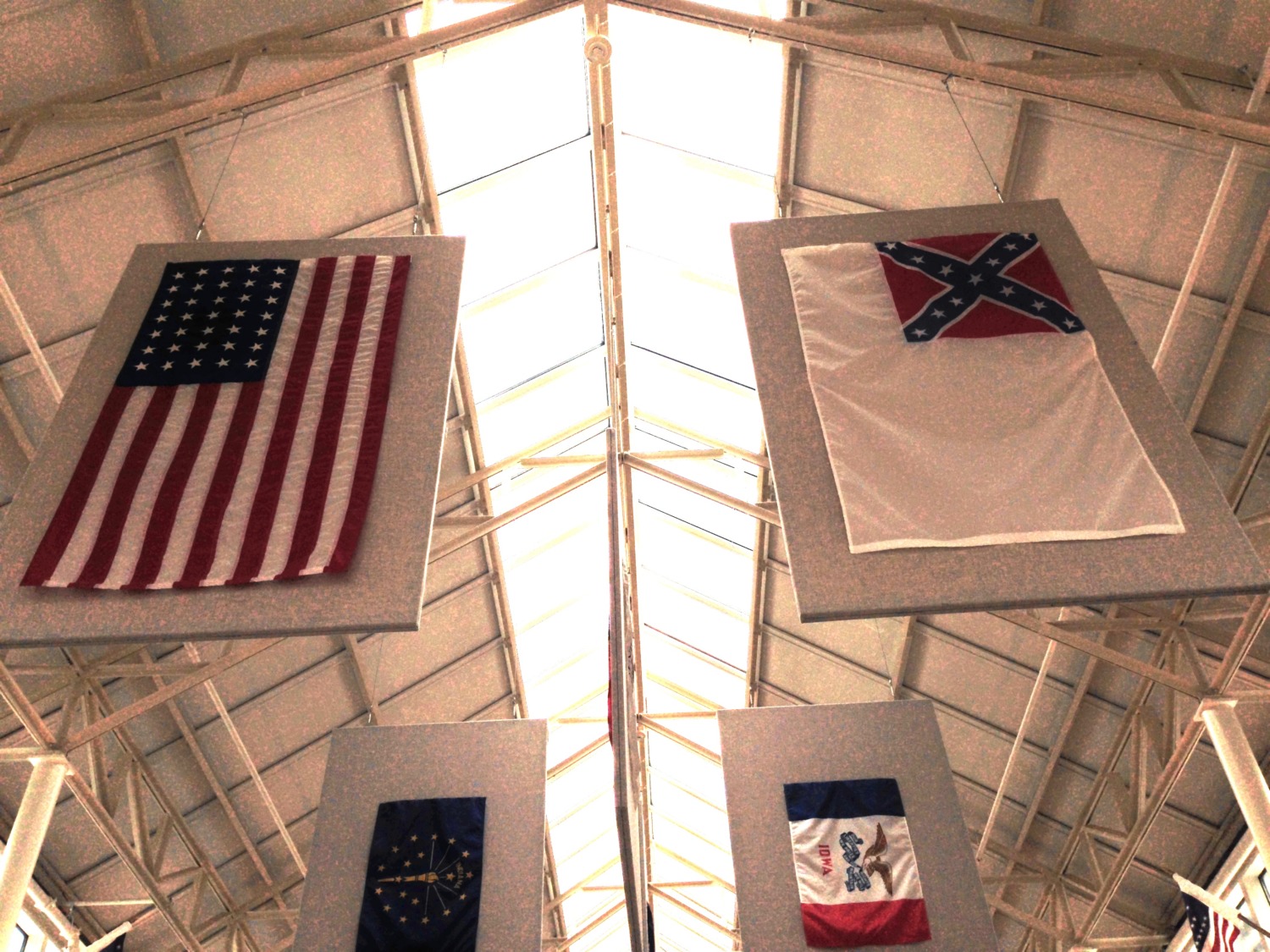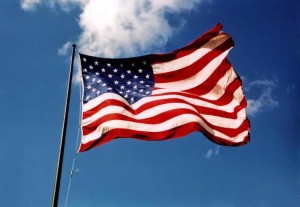One of the often-asked questions we get at the Visitors Centers is “Why don’t you have any Confederate flags?” This question is usually asked by people who are itching for a fight. But sometimes it is just asked out of curiosity – after all, we are a military park where the battle was between the Confederate and Union armies.
An example of this second kind of question is the man who wanted to know why there weren’t any Confederate flags in the James Walker painting “Battle Above the Clouds.” When I answered that there were Confederate flags in the painting, it gave me a chance to interpret the painting for him a bit. Turns out he thought the soldiers at the front of the painting were half Union and half Confederate. Instead, all the Confederate soldiers are way off in the distance up the mountain – carrying little tiny Confederate flags.
 If we are at the Chickamauga Visitor Center, and someone asks the question, the answer is also easy: we do have a Confederate flag – it is the first flag when you walk in the entrance. Then I walk back to the entrance with the person and we talk about the Confederate flag. The flag hanging up at the entrance (next to the US flag from 1863) is the Second National Confederate Flag. It looks like the flag above.
If we are at the Chickamauga Visitor Center, and someone asks the question, the answer is also easy: we do have a Confederate flag – it is the first flag when you walk in the entrance. Then I walk back to the entrance with the person and we talk about the Confederate flag. The flag hanging up at the entrance (next to the US flag from 1863) is the Second National Confederate Flag. It looks like the flag above.
 The problem for most people is that they think the Confederate flag looks like this flag. This is, in fact, the battle flag of the Army of Northern Virginia (General Lee). Note that it is square, not rectangular. This is called the Southern Cross. The Confederate Army that fought at Chickamauga and Chattanooga is the
The problem for most people is that they think the Confederate flag looks like this flag. This is, in fact, the battle flag of the Army of Northern Virginia (General Lee). Note that it is square, not rectangular. This is called the Southern Cross. The Confederate Army that fought at Chickamauga and Chattanooga is the  Army of Tennessee. The Battle flag of the Army of Tennessee had a plain blue background with a white circle and the unit’s identification inside. So it looked like this flag. When the Union and Confederate armies met at Chickamauga and later in Chattanooga, the Confederate Army of the Tennessee flew the second National Flag of the Confederacy and the Battle flag of the Army of Tennessee.
Army of Tennessee. The Battle flag of the Army of Tennessee had a plain blue background with a white circle and the unit’s identification inside. So it looked like this flag. When the Union and Confederate armies met at Chickamauga and later in Chattanooga, the Confederate Army of the Tennessee flew the second National Flag of the Confederacy and the Battle flag of the Army of Tennessee.

Having the US and Confederate flags displayed together in the Visitors Center gives me a chance to educate and connect with our guests. Most of them respond in a thoughtful way. The few that don’t . . .well, I bite my tongue and try to be polite. If all else fails, and they are still itching for a fight, I fall back on the saying a friend taught me, “You are probably right.” Which means (in my mind) “You are totally clueless and there is no way I will ever agree with you.”
 Flags are powerful symbols. They have the power to unite and inspire. They also have the power to divide and can represent a legacy of oppression. What do you see when you look at this flag today?
Flags are powerful symbols. They have the power to unite and inspire. They also have the power to divide and can represent a legacy of oppression. What do you see when you look at this flag today?

Here’s what I see.
http://www.cleveland.com/metro/index.ssf/2015/09/confederate_flag_doesnt_reflec.html
You’re point about the flag being the battle flag of a particular army, not the “Confederate flag” is a good one. The broader point is that too many folks who claim to be interested in the “Confederate flag” only as a matter of Southern heritage, don’t actually know squat about Southern heritage.
Rick – the article is perfect. Thank you so much for sharing it. I am printing out some copies to share with the Rangers here. I hope everyone takes time to read it.